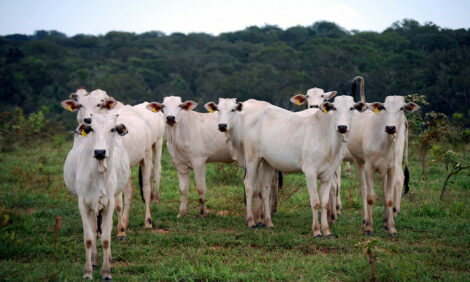



LMC Report: Market Forces at Work!
NORTHERN IRELAND, UK - The recent changes made by meat plants to their purchasing specifications have not been without controversy and have raised consternation among producers.LMC has received many telephone calls and had innumerable discussions with farmers on the subject and has on occasion been challenged over our stance on this matter. However, while many of the calls have been about penalties rather than bonuses, a substantial number have indicated that the changes were long overdue, and that the better quality cattle i.e. those in-spec that are wanted by the market, would no longer have to subsidise the out-of-spec cattle by way of inadequate differentials. LMC’s position on this issue is outlined below:
The Northern Ireland Red Meat Industry Task Force report of October 2007 highlighted the substantial lack of profitability of some forms of beef and sheep production, in particular of beef being produced from the suckler herd. While dairy beef production, at the prices then pertaining, was capable of producing some contribution towards the land and labour costs, the Task Force simply could not see a model of suckler production that then worked. Subsequent market price improvements have of course now altered the picture somewhat; but even yet, the viability of suckler beef production is at best marginal. A re-balancing of prices therefore, that would treat more favourably the premium grades (E, U and R) of the European Classification Grid has the potential to further improve the viability of suckler beef production. Against this background LMC and many within the farming community recognise that the re-balancing of prices and effectively paying more for those animals that have greater value (even where it is at the expense of lower grading animals) will be of benefit to the industry in the long term. What is of course unfortunate is the failure of the processors to give notice to their farmer suppliers of the changes. However, it is clear to us that this is precisely how markets work; when one processor, as we understand it, under pressure to achieve a larger percentage of his throughput within the desired specification, made changes to his price offer, then other processors had to very quickly follow, if they were not to lose their share of the supply of animals from farmers.
It is interesting to note that beef finishers in Northern Ireland, given the high prices of store cattle, have only been able to recoup their outlay by feeding their cattle evermore heavily, bringing them to increasingly higher weights, and of course, also gradually but significantly increasing the age at slaughter and level of fatness. We note the extraordinarily large percentage of cattle slaughtered over 30 months of age in Northern Ireland (see table), as compared to elsewhere in the United Kingdom, where substantially the same customers are being served.
Proportion of NI Origin Cattle Kill In & Out of Age Specification 2006-2009 ( per cent of Category)
Further Reading
| - | You can view the full report by clicking here. |
TheCattleSite News Desk


